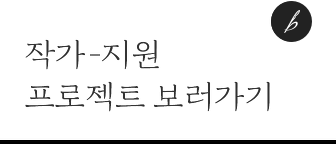Which HCI professional am I?
SOP가 쏘아올린 작은 공 2
SOP를 쓰는 일은 HCI에 대한 생각과 방향을 정리하고 내가 나아가고자 하는 미래를 구체적으로 그려볼 수 있었기에 단순히 지원서의 역할을 넘어서서 스스로에게 유의미한 작업이었다. 그래서 얻게 된, 나는 어떤 HCI인이며 어떤 HCI인이 되고자 하는가에 대한 짧은 글이다. *불펌은 곤란합니다*
1) PART 1. iPhone, and Human-Computer Interaction
I have produced more than 40 digital products for five years in Japan and nine years in South Korea as the perspective of HCI. Of course, I could not adopt or apply the concept of HCI and UX at first work. My professional career started in a mid-sized design company in Tokyo as a first and only foreign employee and UI designer. They wanted their employee to work like below: Every individual in the team should participate in every part of the project and think flexibly. Think rationally with data. In a company culture that repeatedly emphasizes the importance of convergence talent and encourages practice, I have been able to have a perspective and experience that encompasses not only design, also user experience design, publishing, and development as a whole product.
At that moment, smartphones were released earlier in Japan than Korea, and iPhone triggered me to fully unleash my imagination about the interaction between humans and digital systems. The range of users of digital systems expanded from a specific group of experts to ordinary people like me, and the lightweight and compact digital system has naturally blended into our daily lives. With the HCI principle called 'Whenever, any devices', I had designed Samsung.com UK project and distributed it in 32 countries and 72 languages as a responsive web, and designed Mirae Asset Daewoo’s Platform V, the first electronic voting system in Korea that encourages shareholders to vote digitally, as an adaptive. This digital system was designed to fulfill multiple users' lack and provide a better user experience.
2) PART2. Ultimately, From Social Computing to 'Human'
At the beginning of this year, KB Bank launched a mobile financial app called ‘Liiv Next’ for Generation Z. I did not tell people that I designed it, but I got a call from Paymint CEO Young-hwan Kim, who developed the six-digit password technology for mobile payment service in Korea. “Liiv Next, you made it right? I can tell it right away." One of the important keywords in my HCI principle for many years, 'Social Computing', seems to become embedded in my intangible product. As the recent HCI trend advances from interaction between individual users and computers to interaction between multiple users and technology, the impact of the word 'Social' is getting more influential. Computers were first conceived as “thinking machines,” but in the twenty-first century they have become social machines, online places where people meet friends, play games, and collaborate on projects. Moreover, I relish analyzing how multiple humans interact with an online system and defining the HCI principle that satisfies both usefulness and joyfulness. Those concerns led me to ruminate the keyword, 'human', and released several digital products recently with the keyword 'Social.' 'Liiv Next', a Gen Z financial app for KB Bank that wants to broaden the spectrum of banking app users, and SKT's parent-child communication app 'ZEM', which reestablish parent-child relationships from managing children unilaterally.
3) PART3. Concerns about Human-AI Interaction
Why does everyone assume that AI will go beyond us and threaten our lives? When I was in my master’s course, I designed a service model of a robot with AI in a subject called ‘Technology-Based Service Design Model’, which is led by Professor Jae-yeop Kim of the Department of Product Design. I started to focus on relationships between humans and AI. While other colleagues were busy imagining useful robots that mimic human behavior, which eventually threatened humanity, I had my doubts. Is this really the best? Wouldn't it be a better future if humans and technology coexist in a complementary way? But how?
In practice, the idea of 'Human-AI Interaction' was concluded with 'Data'. Most of the digital products I created are aiming to make technology more useful to humans based on data. And to provide quality service, fine data is always required. While designing KB Kookmin Card’s mobile app, ‘Liiv Mate’, which is part of the MyData business followed by the recent three passed laws about personal information usage, I found that the role as a human became more important. For example, instead of saying 'Show me your third-party card payments then your spending will be analyzed.' saying 'Men in their 20s spent the most on purchasing electronic devices' will be more persuasive. One more similar example, instead of saying 'Tracking your financial activities helps us to recommend a loan service', then saying 'women in her 40s took out an average of 100 million won in loans for purchasing house.' will also draw more attention. As I try to interact with AI, I feel that a synergistic effect will be created and eventually return to a more useful value for humans. To investigate further about this idea, I took the 'AI Chief Administration Course' of KAIST Graduate School of AI. In this short but rich course for two months, I could share my thoughts on AI with people from various industries and got to know KIXLAB through Professor Min-Jun Seo of Language & Knowledge Lab (LK Lab).
4) NEXT. Sustainable Human-AI Interaction
I named it "Sustainable Human-AI Interaction" myself because I couldn't find a suitable term to define the symbiotic relationship and sustainable bilateral interaction in which humans and AI cooperate to create a better experience. The ultimate goal of Sustainable HAI is not to completely replace humans with AI, but to understand human limitations and create a better world with them. If I become a member of KIXLAB, I would like to share and theoretically establish and research on this topic and produce meaningful outcomes for humans like many studies that KIXLAB has done, such as ProtoChat, RecipeScape, and Snapsteam.
In my opinion, unlike traditional studies, the collaboration between the industry and academia is becoming more crucial in the HCI field. When working on a practical project, it is difficult to find research results that can reference immediately, and previous studies in schools are difficult to use the latest data in the research process and apply the research results directly to the product. By facing such shortages, I dreamed of becoming a professor at work and school, which means to invest an effort to become a bridge between practice and academia, contribute to constructing an environment where Sustainable HAI can be realized, and strive for lively interaction between practice and academia. And on the journey with the technology that will benefit humans, I want to find answers by sharing thoughts and experiences with students. As a part of the HCI field, I always try not to sink in any theory or outcome (even it is considered verified), since technology and human are rapidly changing. As I did in practice, I want to be a reliable colleague who finds answers together rather than being a person who tells answers at school. Like "Rubber Duck" for software engineers, becoming a "Rubber Professor" for students and putting their heads together toward the future, and interacting abundantly with technologies as humans for benefit. Therefore, I want to be in the HCI field for the rest of my life.

